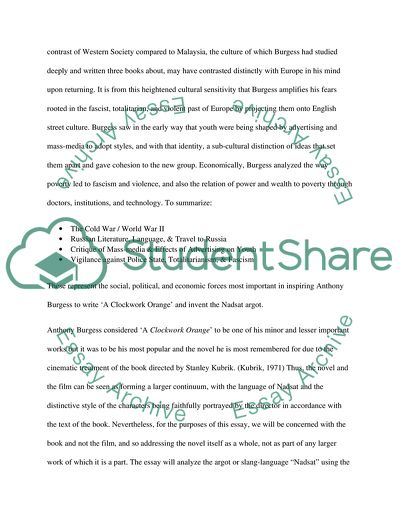Cite this document
(The Modern Rhetorical Practice Based in the Creation of a New Dialect Essay, n.d.)
The Modern Rhetorical Practice Based in the Creation of a New Dialect Essay. Retrieved from https://studentshare.org/literature/1747045-a-rhetorical-analysis-of-anthony-burgess-a-clockwork-orange
The Modern Rhetorical Practice Based in the Creation of a New Dialect Essay. Retrieved from https://studentshare.org/literature/1747045-a-rhetorical-analysis-of-anthony-burgess-a-clockwork-orange
(The Modern Rhetorical Practice Based in the Creation of a New Dialect Essay)
The Modern Rhetorical Practice Based in the Creation of a New Dialect Essay. https://studentshare.org/literature/1747045-a-rhetorical-analysis-of-anthony-burgess-a-clockwork-orange.
The Modern Rhetorical Practice Based in the Creation of a New Dialect Essay. https://studentshare.org/literature/1747045-a-rhetorical-analysis-of-anthony-burgess-a-clockwork-orange.
“The Modern Rhetorical Practice Based in the Creation of a New Dialect Essay”, n.d. https://studentshare.org/literature/1747045-a-rhetorical-analysis-of-anthony-burgess-a-clockwork-orange.


